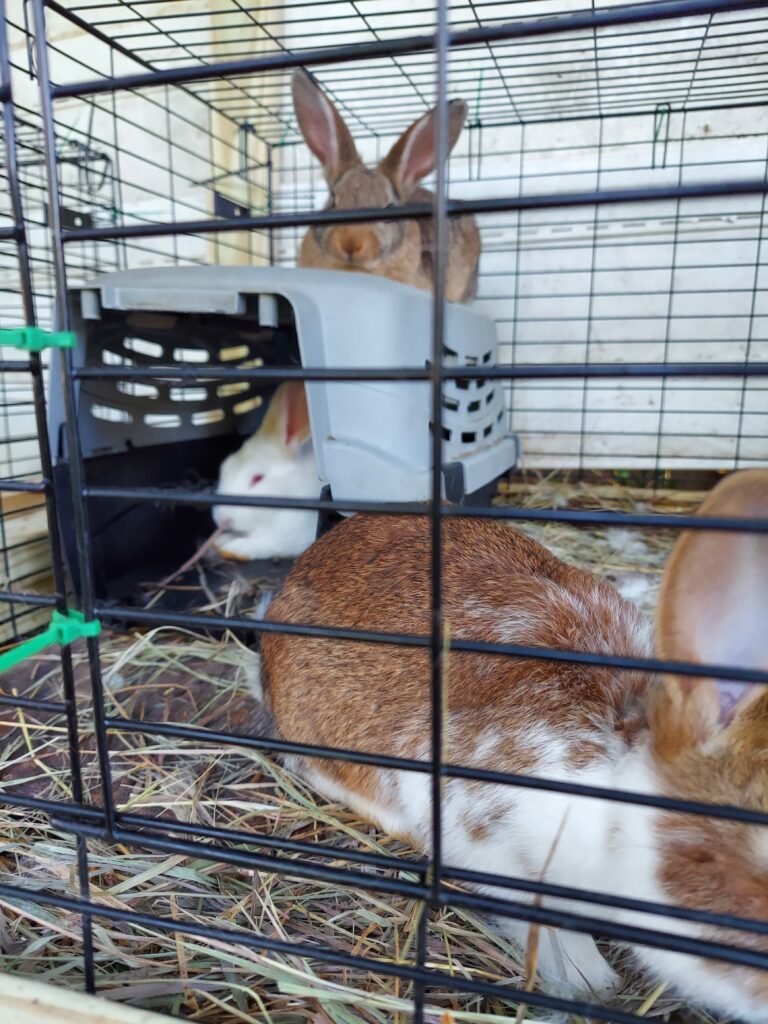
Welcome back to our urban sustainability blog, where we share ideas and inspiration for eco-conscious city dwellers seeking to embrace a greener, self-sufficient lifestyle. Today, we’re exploring the world of raising meat rabbits in urban areas, an often overlooked but efficient and sustainable source of protein for the urban homesteader. In this article, we’ll discuss the benefits of raising meat rabbits, navigating city regulations, and tips for successful rabbit husbandry in an urban setting.
The Benefits of Raising Meat Rabbits in Urban Areas
- Sustainable Protein Source: Raising meat rabbits is an eco-friendly alternative to industrial meat production, as rabbits have a low environmental impact and convert feed into protein more efficiently than many other livestock animals.
- Space-Efficient: Rabbits can be raised in relatively small spaces, making them an ideal choice for urban homesteaders with limited room. Unlike chickens or goats, rabbits are quiet animals and can be easily contained, reducing the risk of disturbing neighbors.
- Nutritious and Delicious: Rabbit meat is lean, tender, and high in protein, making it a healthy and delicious addition to your home-cooked meals. As a bonus, you’ll have the satisfaction of knowing exactly where your food comes from and how it was raised.
Navigating Urban Rabbit Regulations
Before diving into rabbit husbandry, it’s important to research your city’s regulations regarding raising livestock, as rules can vary greatly between municipalities. Check with your local zoning, animal control, and public health departments to ensure that raising meat rabbits is allowed and follows all applicable guidelines.
Getting Started with Urban Meat Rabbits: Tips and Guidelines
- Choose the Right Breed: When selecting rabbits for meat production, opt for breeds known for their size, growth rate, and meat quality. Some popular meat rabbit breeds include the New Zealand White, Californian, and Flemish Giant.
- Housing and Shelter: Your rabbits will need a secure and comfortable shelter to protect them from predators and the elements. Consider using hutches or cages with wire mesh flooring for easy cleaning and proper ventilation. Ensure each rabbit has enough space to move around comfortably and provide separate areas for nesting and waste collection.
- Feeding and Watering: Provide your rabbits with a balanced diet of quality rabbit pellets, hay, and fresh water. Supplement their diet with fresh vegetables and leafy greens to support their overall health and well-being. Avoid feeding them foods high in sugar or carbohydrates, as these can lead to obesity and other health issues.
- Health and Hygiene: Regularly clean your rabbits’ living quarters and monitor them for signs of illness or injury. Keep their nails trimmed and be mindful of common rabbit health issues such as ear mites, respiratory infections, and gastrointestinal stasis. Consult a veterinarian experienced in rabbit care if you have any concerns about your rabbits’ health.
- Breeding and Processing: If you plan to breed your rabbits for meat, be prepared to manage the process from breeding to processing. Familiarize yourself with rabbit breeding practices, gestation periods, and weaning protocols. When it comes to processing, learn humane methods or seek the assistance of a professional to ensure the animals’ welfare.
Raising meat rabbits in urban areas is a practical and sustainable way to source protein while embracing self-sufficiency and environmental stewardship. By following best practices in rabbit care and abiding by local regulations, you can successfully raise healthy, productive rabbits right in your city backyard. So, take the leap into urban rabbit husbandry and join the growing movement towards sustainable and responsible urban living.
